Have You Seen Fingal’s Cave, The 60-Million-Year-Old ‘Cathedral Of The Sea’ On Staffa, Scotland?
Fingal’s Cave is located on the uninhabited island of Staffa off Scotland’s west coast.
It is one of the most extraordinary natural wonders in the world.
Known for its towering basalt columns and unique echoes, this cave has fascinated visitors and inspired artists, poets, and musicians for hundreds of years.
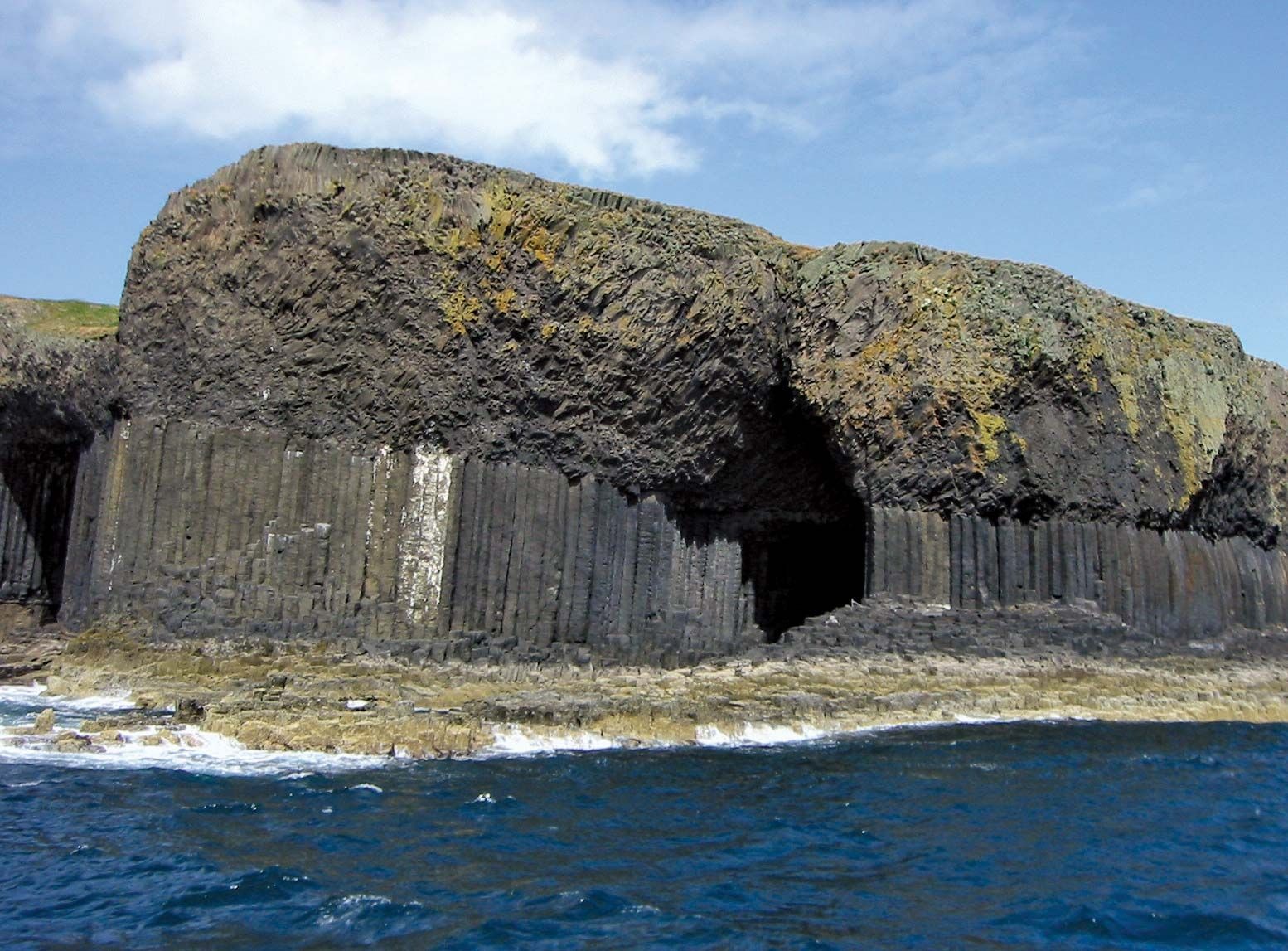
Fingal’s Cave: A Unique Geological Formation
Fingal’s Cave is made entirely of hexagonal basalt columns, similar to those found at the Giant’s Causeway in Northern Ireland.
These columns were formed 60 million years ago during the Paleocene epoch when lava from a volcanic eruption cooled and contracted.
As it solidified, it cracked into a pattern that started out blocky but eventually formed the hexagonal shapes we see today.
Over time, the relentless pounding of the sea carved out the cave, revealing the breathtaking, cathedral-like interior.
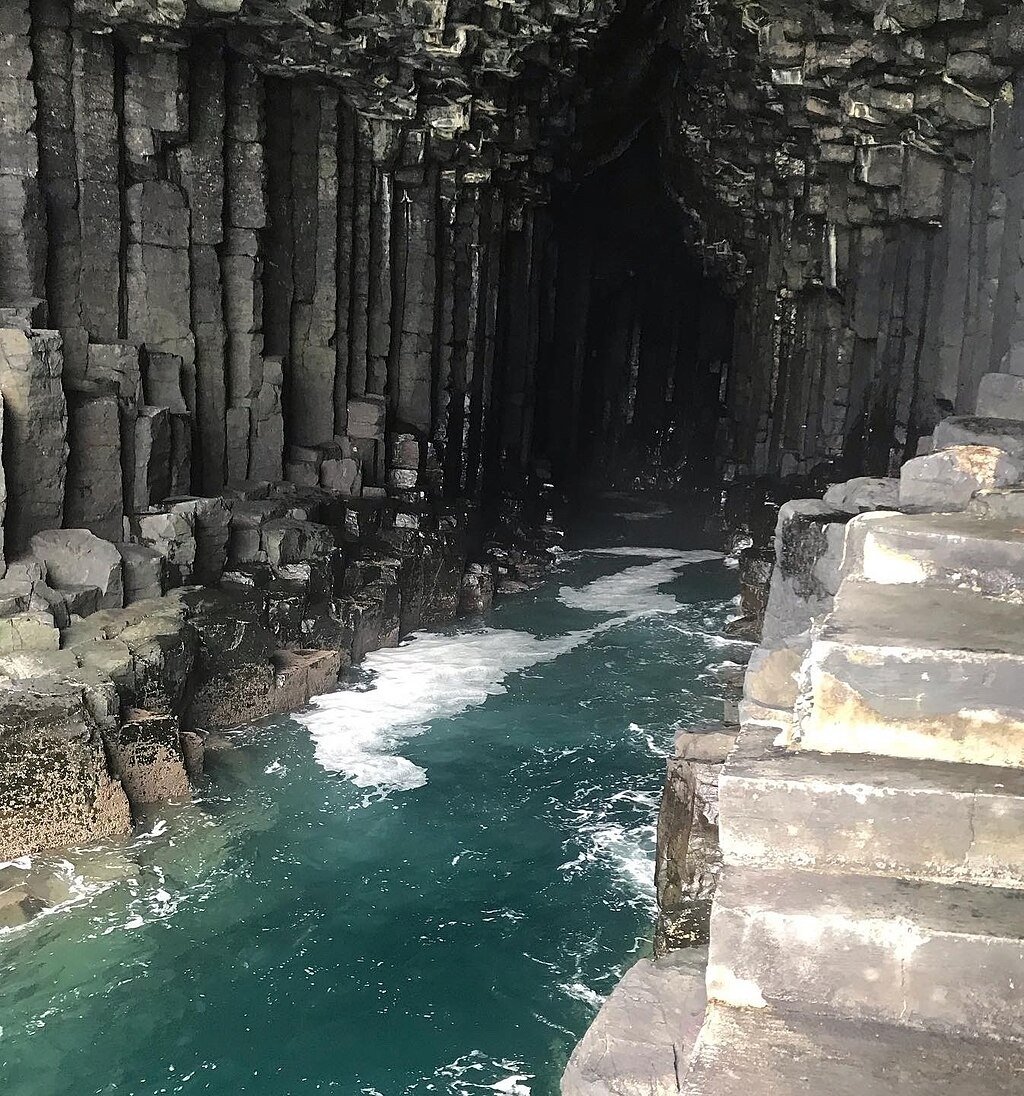
A Cave With A Legendary Name
The cave was originally part of the Ulva estate owned by Clan MacQuarrie.
In 1772, the cave was brought to public attention by naturalist Sir Joseph Banks.
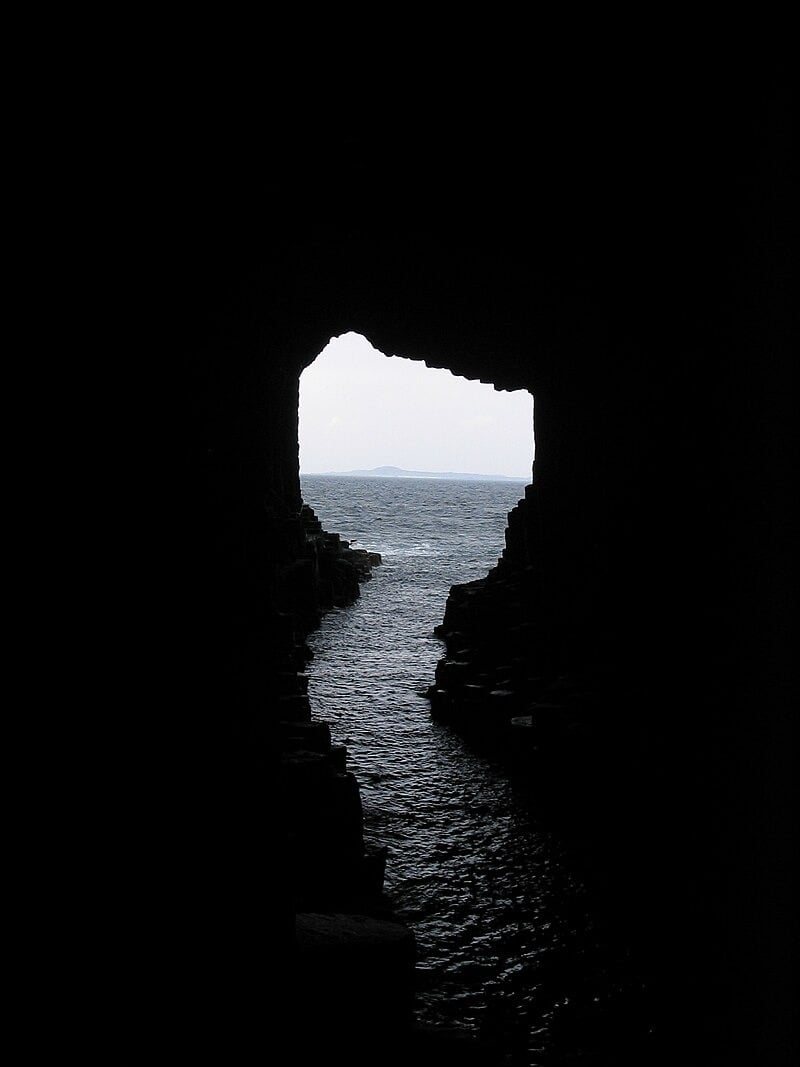
It later became known as Fingal’s Cave, named after the hero in an epic poem by 18th-century Scots poet James Macpherson.
The name Fingal is believed to be a misinterpretation of the Gaelic name Fionn, meaning “white stranger.”

According to legend, Fingal, an Irish hero, built a bridge of these same basalt columns between Ireland and Scotland to face off against the Scottish giant Benandonner.
But when Benandonner saw the enormous “baby” Fingal, he fled back to Scotland, destroying the bridge as he went.
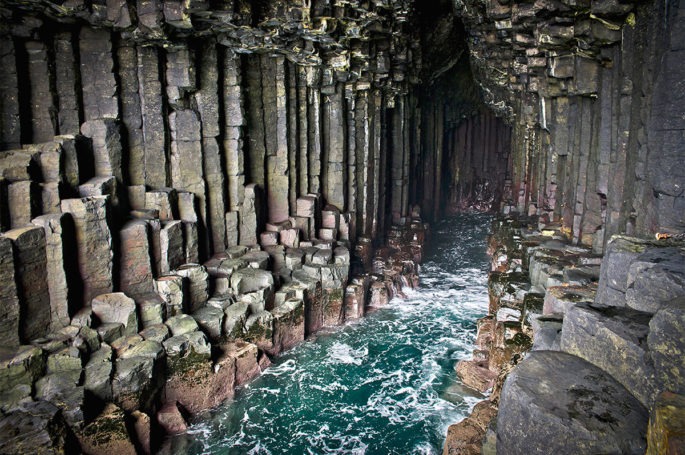
A Popular Tourist Spot
Today, Fingal’s Cave is a must-visit destination for anyone exploring Scotland’s Inner Hebrides.
The cave is only accessible by boat, with tours running from April to September.
Visitors often spot dolphins and seals along the way.
Upon arrival, visitors can land on Staffa and walk to the cave’s entrance, where a row of fractured basalt columns forms a natural walkway just above sea level.
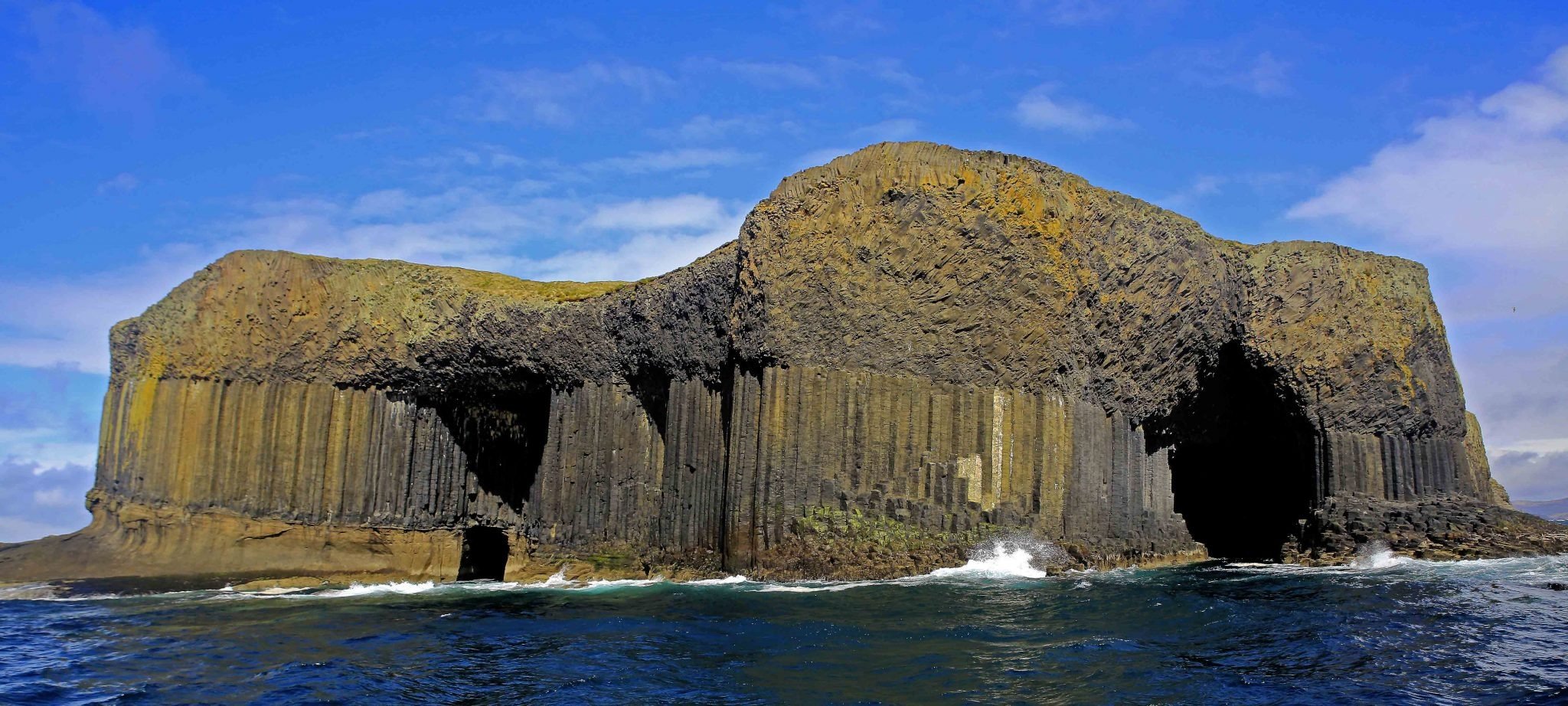
Inside the cave, the atmosphere is nothing short of magical.
The echoes of the waves reverberate off the walls, creating an eerie, almost musical sound that has inspired many.
From within, the entrance of the cave frames a view of the nearby island of Iona, a scene that has been immortalized by countless artists and poets.
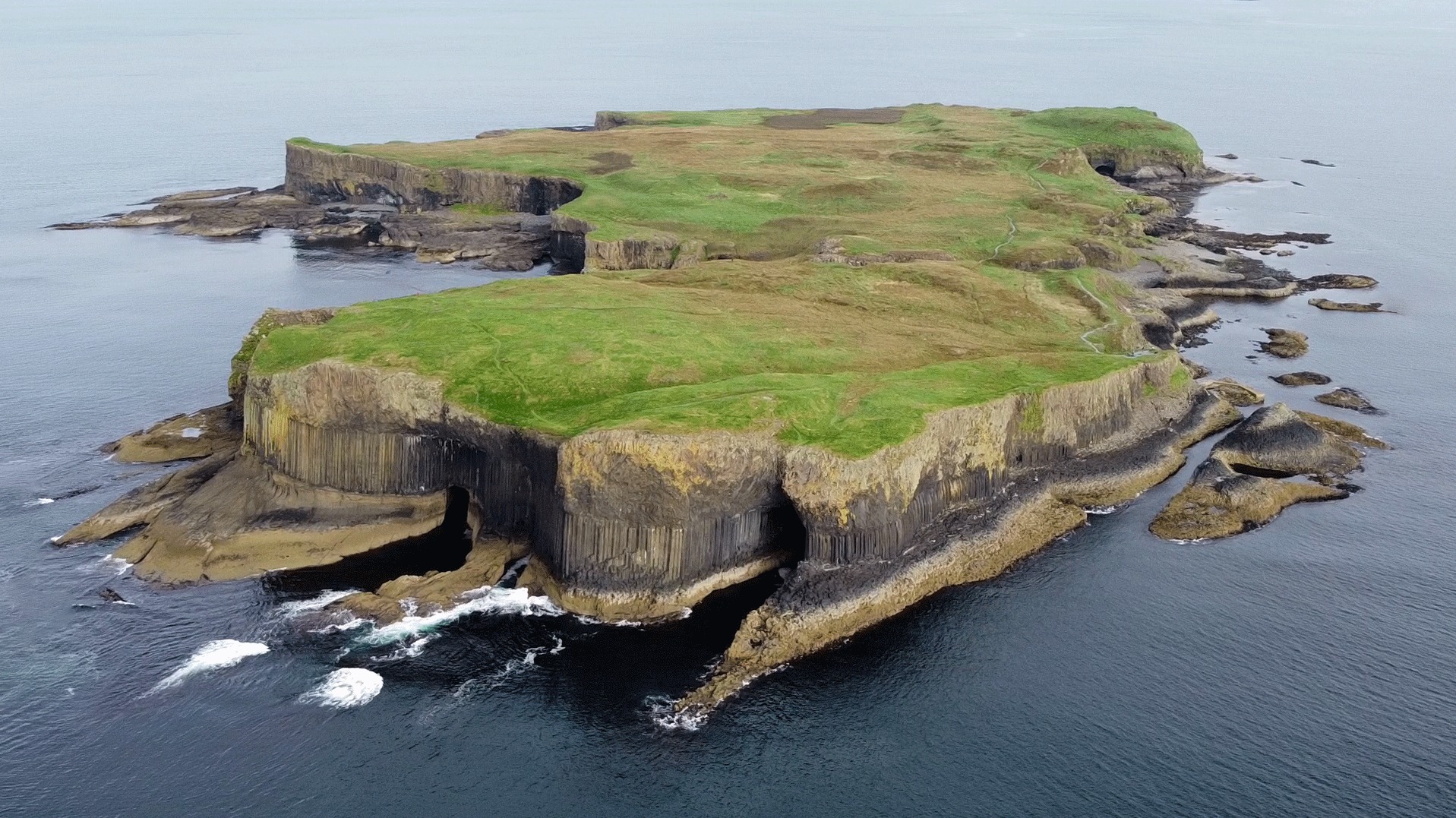
Inspiration for Artists and Musicians
Fingal’s Cave has inspired many artists and musicians over the years.
Perhaps the most famous tribute is Felix Mendelssohn’s “Hebrides Overture,” also known as “Fingal’s Cave Overture,” which he composed after visiting the cave in 1829.
Writers like Jules Verne and poets like William Wordsworth and John Keats have also drawn inspiration from this incredible site.
The 19th-century artist J. M. W. Turner painted “Staffa, Fingal’s Cave.”
The cave even made its way into pop culture through Pink Floyd, who composed a song named after it, though it was ultimately not used in their work.

